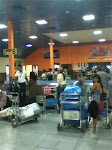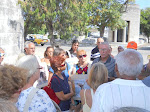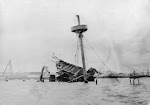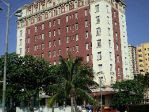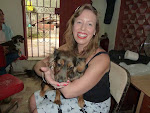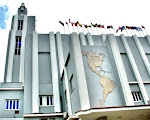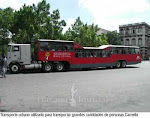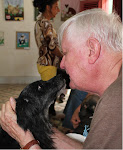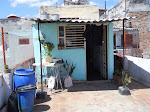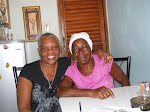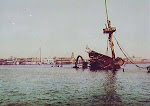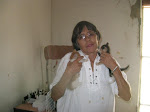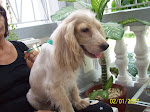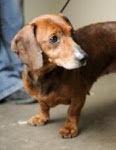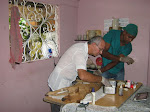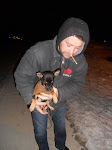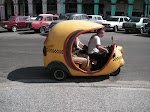My Menagerie
I should have known we'd have so many animals—Charlene had 4 cats when I met her. It was a clear mandate: love me, love my cats. So we've always had a menagerie in spite of its concomitant work and expense. When we had a farm, a few of our dogs lived outside, and some of the cats lived in one of our barns. They all seemed to so well, thanks in no small part to many long trips to the nearest good vet and also to many station wagon loads of pet food (unavailable at any price in our tiny hamlet, Patriot Indiana.)
But our household dogs and cats are only part of the story. In Cuba we're connected to another menagerie. First there was a pack of about ten survivors of Havana's streets living in Nora and her mom's 10th floor apartment. When I first saw them there had to be 10, and since then, their number has ranged from 8 to 12. Whenever I visit, a knock on Nora's front door ignites a riot of barking that finally abates when I take a seat. Nora had one little roly-poly curly who wants to snuggle up by me. They're all delightful, but she's my favorite, though I can never remember her name.
Another part of my Cuban menagerie is 10 to 12 lucky dogs who are permanent residents of Aniplant's slick new headquarters. There you'll find the protagonists of several of the posts in this blog. My all-time favorite is Aló Presidente (see my 8/20/10 post to this blog), a curly black Cocker-like leader of the pack who rules the roost from a defended fort between a large box and a wall and under a table. He couldn't be more my dog if he were here in Florida, sitting next to me as I write this.
Aló has a female counterpart, Bella, also beautiful, long haired and hospitable to visitors. Bella perhaps belongs to Angela more than she belongs to me, not for any lack of my love, but for the amount of Angela's. She is a flight attendant from the UK, who was on one of her layovers in Havana, who spotted Bella, sick and shy near the Plaza de Las Armas, a popular tourist spot. At home Angela got on her computer, found us, and then Nora found Bella, took her in, treated her pneumonia, and then adopted her into the headquarters pack. Bella means "beautiful" in Spanish, and the name certainly applies to this dog. Angela takes every flight she can work to Cuba, and she is a regular visitor to Aniplant's headquarters, always bringing treats and toys for the whole bunch. Bella's story is told in these posts on 2/26/12.
And, although I'll only see most of the other Cuban dogs in my menagerie only once, I can't end this post without a mention of them. They're the dogs and cats whose owners bring them to Aniplant's clinics for low cost sterilization. Aniplant's primary activity is spaying and neutering animals. They do thousands every year with TAP funding the medicines. When I visit Havana, I always try to visit one of the Saturday clinics that move weekly through the neighborhoods. There animal lovers and their companion animals wait patiently for their turn in the veterinarian's schedule. It's a great gift to the animal to be neutered, and each operation is also a gift to the community because massive spay/neuter programs are the only humane way to reduce the population of homeless animals.
So, while I usually don't know their names, I pet them, chat a little with their owners, and mentally add each one to my Cuban menagerie
Les Inglis
